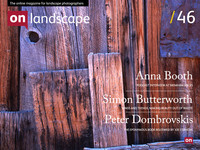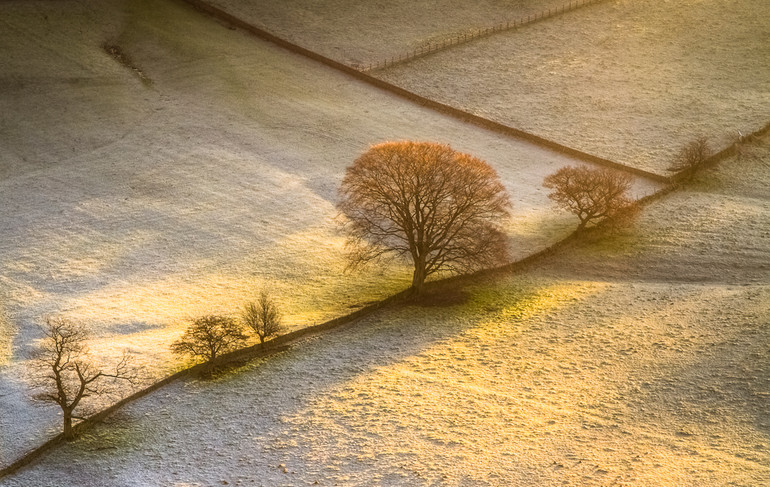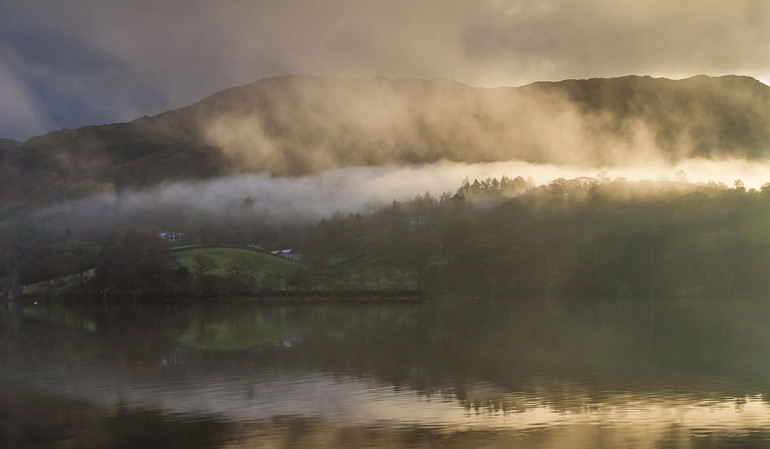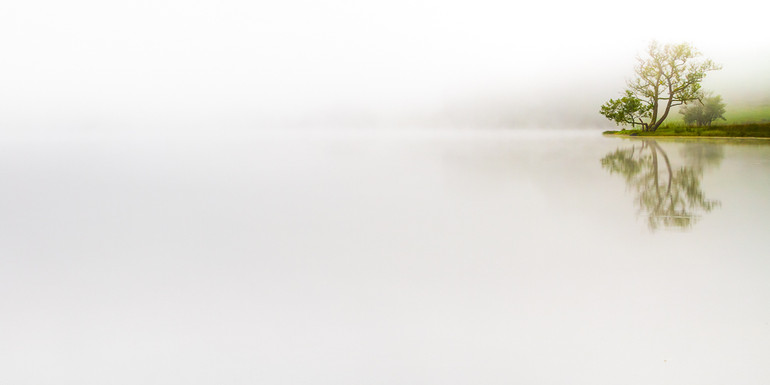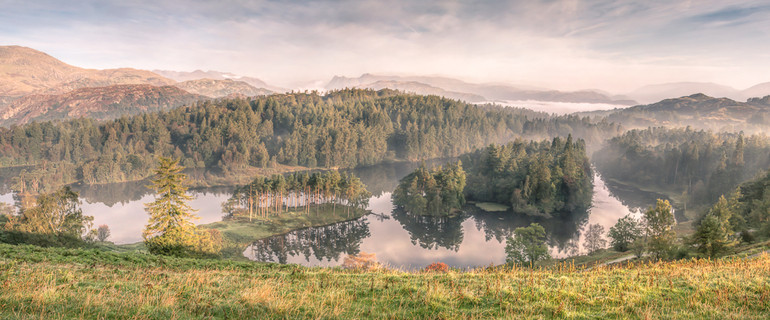Featured photographer

Tim Parkin
Amateur Photographer who plays with big cameras and film when in between digital photographs.

Colin Bell
Ex video game maker, now a company advisor in the digital & creative sector and landscape photographer.
Colin Bell is our willing victim this week - an ex video games developer amongst other things, Colin has a particular affinity for the Lake District and his recent images from Rydal Water particularly caught my eye..
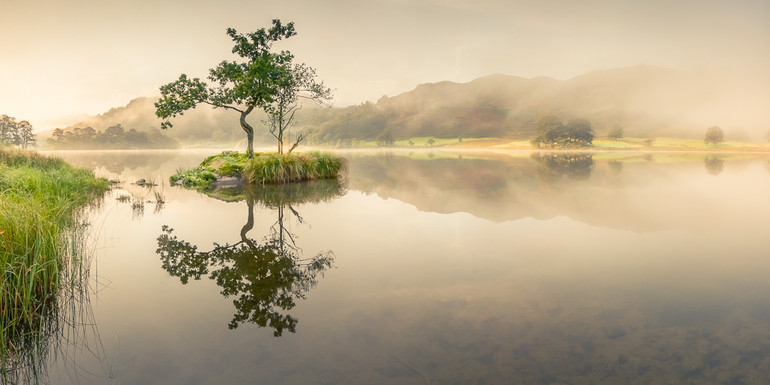 In most photographers lives there are 'epiphanic’ moments where things become clear, or new directions are formed. What were your two main moments and how did they change your photography?
In most photographers lives there are 'epiphanic’ moments where things become clear, or new directions are formed. What were your two main moments and how did they change your photography?
After getting my first DSLR, a Canon 350D, a few years back I became a 'snapper' photographer much like any other, using the camera in auto mode pretty much all the time and just taking family and the odd bird photographs. Then, back in February 2010, I upgraded my camera to a Canon 7D and in a vague attempt to justify the cost I decided to get out more on our weekend trips to the Lake District and consciously improve my photography. In order that it didn't intrude on family life (have you ever tried making any photographs whilst out walking with a family and three dogs?) I would, and still do, get up very early and go out for dawn returning to our static caravan at Skelwith Fold usually in time for breakfast. So I'm now into my third year since starting my photography journey proper and so that is maybe not quite enough to have had epiphanic moments that have transformed my photography. Mainly my improvement has been incremental. That said though there are a number of key lessons that I have learnt that perhaps could pass as minor epiphanies or at least *doh! slaps forehead* moments - I'm sometimes a slow learner.
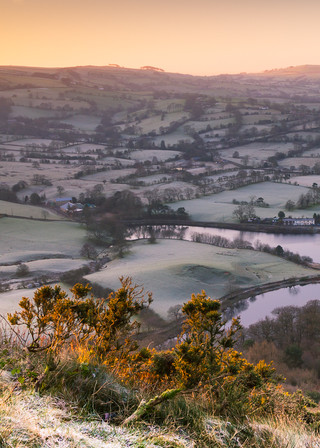 The first is a simple one which became real to me as I was attempting to take yet another into the sunrise shot on an autumn morning in Langdale. As I was doing this and struggling with the stupidly wide range of light I turned and saw the grasses and the fell side in beautiful light and shadow. I turned away from the sun and created a stitched panorama of the light falling on the grasses and Pikes. When I got home and stitched it together I was thrilled with how it looked completely different to my photographs thus far. A simple realisation came from this being where the light falls is more interesting than where it is coming from. I have probably read this many times before but I'm not very good at learning by theory, only by experience and feel which does make me prone to missing simple things. Don’t get me wrong though, I’m not in any way dismissive of well taken and meaningful sunrise and sunset photographs and still do make the odd one like that.
The first is a simple one which became real to me as I was attempting to take yet another into the sunrise shot on an autumn morning in Langdale. As I was doing this and struggling with the stupidly wide range of light I turned and saw the grasses and the fell side in beautiful light and shadow. I turned away from the sun and created a stitched panorama of the light falling on the grasses and Pikes. When I got home and stitched it together I was thrilled with how it looked completely different to my photographs thus far. A simple realisation came from this being where the light falls is more interesting than where it is coming from. I have probably read this many times before but I'm not very good at learning by theory, only by experience and feel which does make me prone to missing simple things. Don’t get me wrong though, I’m not in any way dismissive of well taken and meaningful sunrise and sunset photographs and still do make the odd one like that.
The second leap in progress came more recently and is something that I've learnt from reading On Landscape and 'overhearing' various twitter conversations from other photographers and reading the blog posts and musings of some of the more thoughtful and articulate photographers. In my first couple of years I would get to a location and start taking photographs straight away. I’d take sometimes over a hundred in a morning and then enjoy looking through them and choosing the best ones. Whilst I was learning that wasn’t so bad at all, in fact it almost certainly helped to bring my understanding, such as it is, get to where it is today. I started asking myself a lot of questions about the photographs themselves. Why is that one better? Why isn’t that one as sharp as I wanted? Now though, I’m asking those questions first, using the experience that came through looking through those failed exposures . The result is that I now make far fewer photographs at a location. Often that means none at all. Since I'm a 'digital native' having no experience of film it could be said that the incremental cost of making one more photograph is zero so why not make more? For me it is nothing to do with cost and more to do with taking the time to find the right composition, refining it, feeling it, waiting for the right conditions and getting it just right. I reserve my ‘snapping’ to the use of my iPhone that I do use extensively to try out compositions and to satisfy the urge to take more photographs.
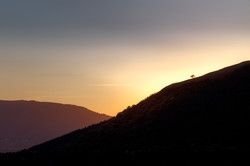 Tell me about why you love landscape photography? A little background on what your first passions were, what you studied and what job you ended up doing
Tell me about why you love landscape photography? A little background on what your first passions were, what you studied and what job you ended up doing
I guess the first thing to say is that I absolutely love countryside and the Lake District in particular. That is where I feel at home, I feel a sense of place when out walking or even just driving through the open space. Time becomes secondary to seeing the light and shade, hearing the sounds of nature and feeling the breeze or warmth of the sun. In twenty something years of marriage we have holidayed almost exclusively in the Lake District with occasional excursions to Scotland and recently to Northumberland and for the last seven years we have owned a static caravan in the heart of woodland at Skelwith Fold near to Ambleside. Once I'd started on my photographic journey my goal became bringing that 'sense of place' that I personally feel into the photographs that I make. It could be said and to an extent I accept that some of my work has been generic and derivative, certainly in the early days I think that was a warranted comment. As my technical skills have improved and enabled me to be more in control of my creativity I hope that I am starting to bring more than ‘just a vista’ to a photograph.
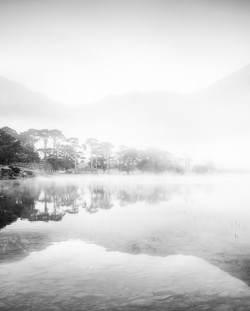 Images are starting to resonate with people that I show them to and provoke a sense of ‘being there’ or at least of wanting to be there. First and foremost though I make photographs for myself, I love looking through my own processed photographs and have a childish excitement when I'm first uploading from my camera to take a look at the creations on screen. The corollary to my love of the countryside is that I really dislike cities, not in any phobia kind of way its just that I don't enjoy spending time there, in and around masses of people (I'm sure the feeling is mutual!). My year at Manchester University was an unhappy one and I left fortuitously stumbling into developing video games until I got a 'proper job'. Developing video games was phenomenally hard work, particularly bringing up a family within an industry whereby the accepted culture was huge amounts of unpaid overtime 'for the love of the game'. My career progressed from being a good programmer, with an ability to bring ideas and sketches into reality - well at least ‘virtual’ reality - to the management of teams and then studios and as such I forewent that ability and sense of satisfaction of being personally and directly creative. The feeling of seeing the results of my own ideas and creativity on the 'screen' and seeing them in print are somewhat similar to finishing a new game feature or admiring a published product on the shelves of Game or HMV. More than that though, getting out at “dark o’clock” in the morning really is good for the soul. Sometimes I can’t believe the wonder of what is going on around me and most often I’m the only one there to see it. Last weekend I was at Tarn Hows overlooking the most beautiful cloud inversion with just wonderful light and atmosphere. I’m not afraid of a cliché vista and they don’t come any more so than Tarn Hows in the Lake District, but not like this! Making a panoramic image of this was just a pure joy and not for one minute did I worry that it would be ‘just another picture of Tarn Hows’. After 25 years of working in the video game development business, I’m still waiting for that ‘proper job’.
Images are starting to resonate with people that I show them to and provoke a sense of ‘being there’ or at least of wanting to be there. First and foremost though I make photographs for myself, I love looking through my own processed photographs and have a childish excitement when I'm first uploading from my camera to take a look at the creations on screen. The corollary to my love of the countryside is that I really dislike cities, not in any phobia kind of way its just that I don't enjoy spending time there, in and around masses of people (I'm sure the feeling is mutual!). My year at Manchester University was an unhappy one and I left fortuitously stumbling into developing video games until I got a 'proper job'. Developing video games was phenomenally hard work, particularly bringing up a family within an industry whereby the accepted culture was huge amounts of unpaid overtime 'for the love of the game'. My career progressed from being a good programmer, with an ability to bring ideas and sketches into reality - well at least ‘virtual’ reality - to the management of teams and then studios and as such I forewent that ability and sense of satisfaction of being personally and directly creative. The feeling of seeing the results of my own ideas and creativity on the 'screen' and seeing them in print are somewhat similar to finishing a new game feature or admiring a published product on the shelves of Game or HMV. More than that though, getting out at “dark o’clock” in the morning really is good for the soul. Sometimes I can’t believe the wonder of what is going on around me and most often I’m the only one there to see it. Last weekend I was at Tarn Hows overlooking the most beautiful cloud inversion with just wonderful light and atmosphere. I’m not afraid of a cliché vista and they don’t come any more so than Tarn Hows in the Lake District, but not like this! Making a panoramic image of this was just a pure joy and not for one minute did I worry that it would be ‘just another picture of Tarn Hows’. After 25 years of working in the video game development business, I’m still waiting for that ‘proper job’.
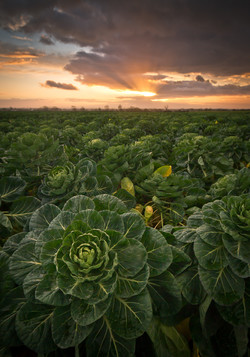 Could you tell us a little about the cameras and lenses you typically take on a trip and how they affect your photography.
Could you tell us a little about the cameras and lenses you typically take on a trip and how they affect your photography.
My camera is a Canon 7D and I have three lenses which are: Canon 70-200mm F/4 L, Canon 24-105mm F/4 L IS and Sigma EX 10-20mm. The great thing about being based in the heart of the Lake District is that my dawn trips out start perhaps only an hour or so before sunrise, sometimes longer sometimes shorter depending on where I want to get to and how much walking I want to do. I usually carry all of my lenses on an excursion along with a Manfrotto tripod and head along with the obligatory remote release, its quite a heavy bag but I'm no Stewart Smith or Alex Nail, who demonstrate far greater dedication to the cause than I, when it comes to how far I'm going to carry this equipment for. Typically I stay out for 2-3 hours before heading back for breakfast and perhaps walking a couple of miles or even less if I've planned well, have a specific idea or just get engrossed in a location. I would pretty much always start with the 24-105mm lens attached, I'm using the wide angle lens less these days - not that its not a good lens its just that I'm starting to dislike the scale distortion that comes with it. I use Lee filter system and typically only use one filter, being an ND soft grad of appropriate strength. The other equipment I use is my iPhone which I use extensively for 'seeing' in a wider angle but also for a hyperfocal range calculator app which I sometimes use depending on the composition and importance of depth of focus.
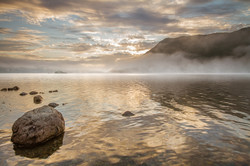 Lastly the simplest tool of all is the Notes app (actually I could use a pen and paper I suppose for complete simplicity) on which I sometimes jot down words, particularly to do with the colours of a scene. For months I found that the colours I saw (or perhaps felt) when at a location were not what I saw when I processed. Maybe that is due to the limitations of the sensor or perhaps more likely just the limitations of me, I don't know. It was interesting to note Tim’s recent article on this subject which suggested I found that with colour notes of shadow or of the reflected light in clouds for example I could more accurately represent what I felt the scene to be like. Don't get me wrong, I'm not striving for perfect reality at all I just want to feel the same when I look at a photograph as I did when I was there. As we all know, the colours at dawn are so varied and what can seem an amazing ochre light on foreground grasses at shutter release can somehow become lemon curd when looking on the screen.
Lastly the simplest tool of all is the Notes app (actually I could use a pen and paper I suppose for complete simplicity) on which I sometimes jot down words, particularly to do with the colours of a scene. For months I found that the colours I saw (or perhaps felt) when at a location were not what I saw when I processed. Maybe that is due to the limitations of the sensor or perhaps more likely just the limitations of me, I don't know. It was interesting to note Tim’s recent article on this subject which suggested I found that with colour notes of shadow or of the reflected light in clouds for example I could more accurately represent what I felt the scene to be like. Don't get me wrong, I'm not striving for perfect reality at all I just want to feel the same when I look at a photograph as I did when I was there. As we all know, the colours at dawn are so varied and what can seem an amazing ochre light on foreground grasses at shutter release can somehow become lemon curd when looking on the screen.
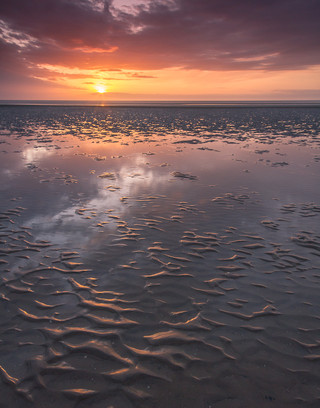 What sort of post processing do you undertake on your pictures? Give me an idea of your workflow..
What sort of post processing do you undertake on your pictures? Give me an idea of your workflow..
Almost all of my processing is done within Lightroom 4 on my MacBook Pro. Although I have Photoshop Elements installed it doesn't feature at all in my workflow, I simply don’t get on with it. I love the simplicity of Lightroom and although I might 'fettle' for a while longer, the vast majority of processing is done within 10-15 minutes of looking at it and in pretty much the order that is laid out in the develop panel. Regular followers of mine on Twitter will realise that I often upload a photograph made on a Sunday morning in the evening after we've returned home - I don't ordinarily leave photographs 'on my hard drive' for a rainy day. Most of the 'fettling' time is spent looking at the colour processing and I often de-saturate the overall colour whilst introducing very small amounts of split-tone to the highlights and shadow depending on the notes taken in the field. The second piece of software I use is PTGui for stitching panoramas together made up typically of 4 to 6 portrait format shots. I shoot stitched panoramas often because I don't want the scale or perspective distortion of a wide-angle lens but do want a wide angle of view. Having said that, sometimes I do shoot wide angle panoramas too, Rydal Tree is an example of that, made up of 5 images shot at 16mm. PTGui seems to be the most reliable of the stitching software that I've tried although it is by no means perfect and every one has to be checked in detail even though typically I allow up to 50% overlap of images.
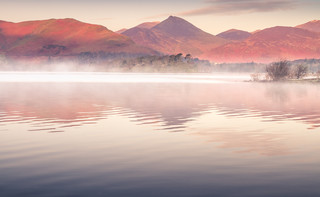 Do you get many of your pictures printed and, if at all, where/how do you get them printed?
Do you get many of your pictures printed and, if at all, where/how do you get them printed?
Yes I do. I have an Epson Pro Stylus 3000 printer on which I print the occasional sales that I make. In addition my good friend James Bell - no relation - has a particularly nicely developed and highly 'Google ranked' online retail website for Lake District prints on which I am a guest photographer. For those sales James handles all of the printing and framing logistics and we have an arrangement to share the generated revenue. Although I do sell prints I am very realistic that its not really a commercial business in any way. If one were to take into account the costs of equipment, mileage, software and time in any realistic way then we all know that its not even a self sustaining hobby (at least for me anyway). Generally though I wish more people did buy prints, not just mine – anyone’s as the most common reaction I get when people look at my work in print is that they look much nicer and are in so much detail than can be appreciated on the web. Although one can get an overview of a photograph by looking at a 1000px version on a website, to see it large and in detail, particularly the panoramic versions, is particularly satisfying.
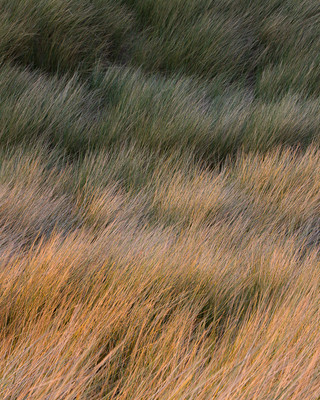 Tell me about the photographers that inspire you most. What books stimulated your interest in photography and who drove you forward, directly or indirectly, as you developed?
Tell me about the photographers that inspire you most. What books stimulated your interest in photography and who drove you forward, directly or indirectly, as you developed?
I’ve mentioned already that I don’t learn well through reading. However I do get inspired by looking at photographs made by others, and with social media such as it is, I look at a lot of photographs. I find I can get inspired by those whose photographic creations are completely different to my own because I’m not looking to re-create the images of others but I can use aspects of their photography to inspire my own creations. The recent ‘Songs of Travel’ series by Rob Hudson have produced some fabulous images in which the sense of presence in those images is wonderful. Stewart Smith’s photographs from the peaks of the Lakeland fells inspire me as I can see familiar landscapes in conditions that I can never experience. I suffer from Menieres Disease which amongst other things means that my sense of balance is somewhat suspect and as such lone dawn trips to the summits of the fells is not something that I’ll be attempting. Of course this magazine’s own Joe Cornish is a constant source of photographic stimulation and more than once perusing his wonderful images has given me a metaphoric kick up the backside to get out in the evening light. Pete Hyde and John Parminter, both featured photographers in previous editions, have shared some wonderful photographs the composition and colour of which I can only aspire to. Finally Mark Littlejohn, a Cumbrian based photographer, started his photographic journey at a similar time to me. I love his ability to try new things with his photography and processing, to go in his own direction of composition. In reality there are too many to mention and sometimes my interest is piqued by common or garden ‘Flickr’ photographers who occasionally come up with a superb composition the lessons of which can be stored and called upon in the field.
Tell me what your favourite two or three photographs are and a little bit about them.
The first one I’d pick up is one entitled “Light and Land from Teggs Nose”. The unusually named Teggs Nose is a nicely located area just out of Macclesfield and looks out onto Shutlingsloe and over Croker Hill. However on this day I had gone purposefully to make a ‘no sky’ image. Clear skies were forecast and I really wanted to see what I could achieve with some elevation and with the first light on the wonderful patchwork of fields. I had envisaged a wider angle than this however when the light hit the main tree in the line I quickly changed lens to the 70-200mm and composed this image. As is often the case, in the rush I initially overlooked a detail and made the photograph at f/16 however I re made the image at f/8 and was delighted with the resulting image.
The second image was a lesson learned about patience and is an image that you chose to include in this article. I had gone to Grasmere a good hour before sunrise and had a stroll round. The rain started and at dawn there seemed no prospect of making anything that morning. Something niggled at me to hang around since although the low cloud seemed drab and grey with the rain I fathomed that if it did stop and the sun made a brief appearance that brief moment of clearing would produce a dramatic result. And so there I was stood under a brolly for 45 minutes and about to pack up when the low cloud started to agitate and the rain ceased. Although not technically a great photograph in my opinion it serves to me as a reminder of patience and that for all the ‘lost causes’ that we as landscape photographers chase occasionally we are rewarded with something of awe inspiring beauty.
I was torn over which of my most recent images to include in this section. Rydal Tree is perhaps one of my favourite photographs I’ve made to date and it was the result of choosing the right composition and just staying still, knee deep in water, until the right moment. In the past I may have still made this image but it would have been a little by chance amongst a host of other compositions. On such a beautiful morning as that I only made two photographs. However for lessons learnt for the future, Loughrigg Tarn II is probably an image that will help me progress in myself given that it is a substantial departure from anything I’ve created up to this date. Although its an image made possible by the almost complete white out conditions I was surprised at how much I loved a photograph with such simplicity.
Can you recommend two relatively unknown areas of the lakes that are worth a photographic visit?
This is a great question Tim, particularly as my own photography develops and I’m looking to broaden the places that I go to on photographic quests. There are two areas, not too far apart, that we have walked on numerous occasions that I think would be very fertile in the right light. Both are on my mental list for when time and conditions allow. The first is Devoke, an area that is perhaps not typically Lakeland, there are no ‘looming’ mountains dominating the immediate vicinity however I love the desolate nature of the surrounding landscape. This is an area where you could walk for hours and not meet anyone at all just strolling the undulating hills. The type of location that even on a calm day there will be wind in your face from seemingly every direction. Eskdale has pretty much everything you might want as a photographer: remoteness with beauty at Burnmoor Tarn, coastline at Ravenglass, waterfalls at Esk Falls or Stanley Ghyll Force, dramatic mountainous surroundings of Upper Eskdale. A wonderful place that I need to find a way to spend more time at.
 If you were told you couldn’t do anything photography related for a week, what would you end up doing (i.e. Do you have a hobby other than photography..)
If you were told you couldn’t do anything photography related for a week, what would you end up doing (i.e. Do you have a hobby other than photography..)
That’s a tricky question really. I’d like to think that without photography I’d perhaps enjoy some more walking or become a member of Lancashire Cricket Club and relax by watching some 4-day cricket. Perhaps I would re-ignite my teenage interest in drawing and sketching. In reality I would probably end up bodging some DIY in a forlorn attempt to improve our house.
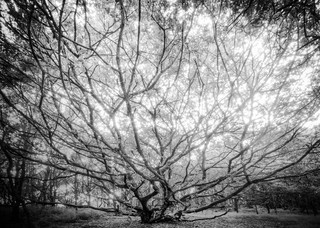 What sorts of things do you think might challenge you in the future or do you have any photographs or styles that you want to investigate? Where do you see your photography going in terms of subject and style?
What sorts of things do you think might challenge you in the future or do you have any photographs or styles that you want to investigate? Where do you see your photography going in terms of subject and style?
I definitely want to explore new locations. I love the Lake District of course but there are other areas that I’d like to explore. I’ve already started taking in the east Cheshire Peak District, around Shutlingsloe and Shining Tor as this is within ‘striking distance’ of where I live. We took a family holiday in Northumberland this year and although it was not a photography trip there is so much potential there despite it being a well-covered area. In terms of style, I really have no idea or vision for where I want to go. This isn’t unusual in my life. My career, for example, progressed based on what I felt at the time, not to any prescribed life plan or ambition. I have been excited by a few of the photographs I’ve taken recently, particularly at Rydal and Loughrigg Tarn. I was surprised at how much I liked the more minimal but striking compositions that the mist allowed for and that is something that I’m going to take further. It seems that as I am developing, the less complicated the a photograph becomes the more I like it. I want to continue to path of making fewer photographic images but being more thoughtful, discerning and ambitious with those that I do make. Where that takes me I’ve really no idea. I’ve said that I’m wholly digital at the moment but I retain a fascination with the idea of film. Whether I’m ever prompted to venture down that avenue remains to be seen.
Who do you think we should feature as our next photographer?
I’d love to see some of those that I’ve mentioned above take part, Mark Littlejohn or Stewart Smith offer something different to those featured in the past in my opinion and although I know a little bit about what drives them I’d like to know some more.
Many thanks to Colin Bell for taking part in our Featured Photographer section - if you want to see more of Colin's image please take a look at his website or his Flickr stream.

